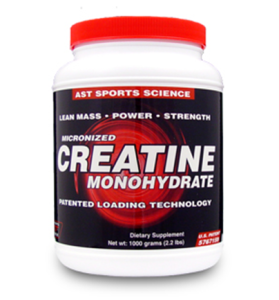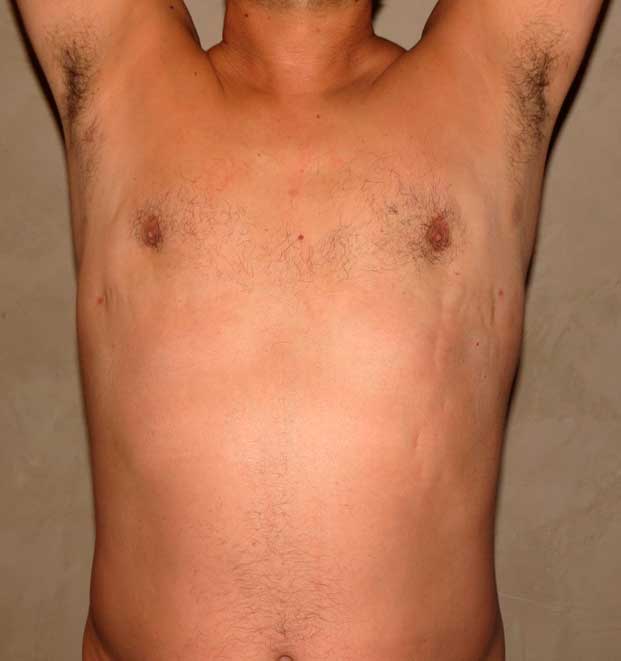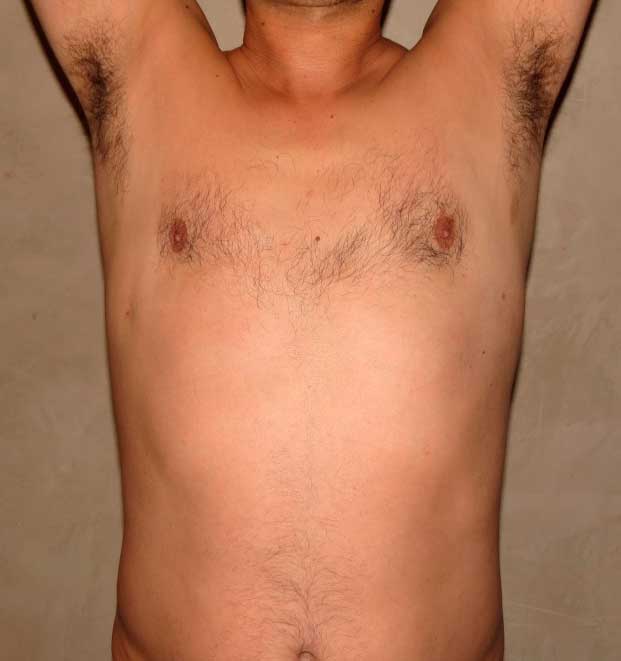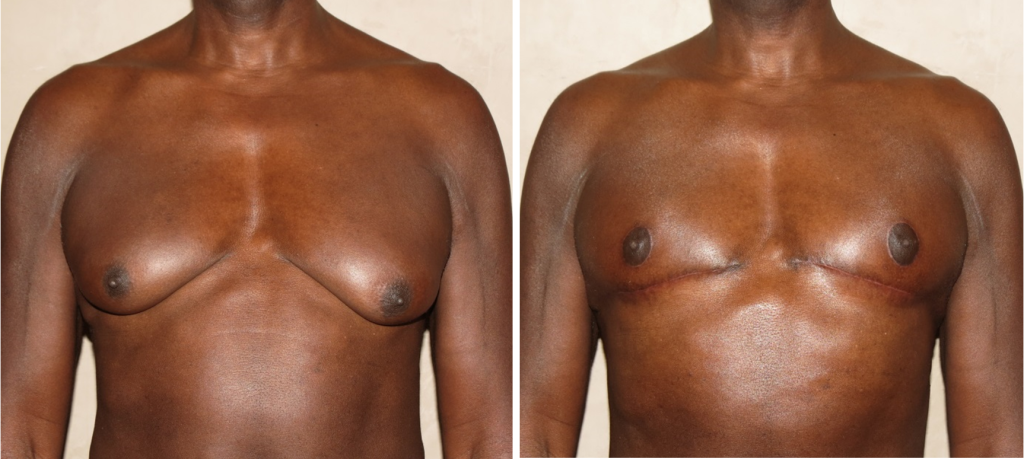Does Creatine Cause Gynecomastia? Busting The Myth
As a double board-certified plastic surgeon specializing in gynecomastia surgery, I’ve treated hundreds of men concerned about the causes of enlarged male breasts, including the potential role of supplements. One common question I hear is: “Does creatine cause gynecomastia?” Let’s explore what science says about creatine and gynecomastia, and what you really need to know before panicking or discontinuing your supplement routine.
What Is Creatine and How Does It Work?
Creatine is a naturally occurring compound that helps supply energy to muscles, particularly during high-intensity workouts. It’s synthesized from the amino acids arginine and glycine, and the body stores it primarily in skeletal muscle.
For those trying to increase muscle mass or improve performance, creatine is one of the most widely used and studied supplements available. When taken in appropriate doses (typically up to 20 grams per day in loading phases), creatine is considered safe for healthy individuals. However, like any supplement, it’s essential to understand its effects and separate fact from fiction.
What the Research Says
The internet is filled with speculation linking creatine to gynecomastia, but when you sift through the science, the story changes. While anecdotal claims may cause concern, credible research tells a different tale. Despite creatine’s popularity in the fitness world, no direct clinical evidence links pure creatine supplementation to male breast tissue growth. To understand why this myth persists and why some still experience breast changes while supplementing, we need to look more closely at how creatine interacts with the body’s hormones.
Creatine and Hormones
The concern that creatine might cause gynecomastia often stems from a misunderstanding of how it affects hormones. Some speculate that creatine increases testosterone, which might then convert to estrogen (a process known as aromatization), leading to breast tissue growth in men.
However, clinical research does not support this theory. Studies have shown that while creatine may cause a mild rise in dihydrotestosterone (DHT), it does not significantly increase estrogen levels, the hormone directly linked to gynecomastia. So, if you’re wondering, “Can creatine increase breast size in men?” the answer, according to current evidence, is no.
That said, some men do report developing gynecomastia after starting supplements. In these cases, the cause is often not creatine itself, but other ingredients found in multi-ingredient workout blends or contaminated supplements that may contain anabolic steroids or prohormones.
Gynecomastia From Supplements: What to Watch For
Products marketed as testosterone boosters or those that include hormone-altering compounds are more suspect. This is why it’s critical to use trusted brands and consult your doctor before beginning any supplement regimen.
When to See a Specialist
If you’ve noticed persistent swelling, tenderness, or fullness in the chest area, whether or not you’re taking supplements, it’s a good idea to consult a specialist. True gynecomastia involves the growth of glandular tissue and won’t resolve with diet or exercise alone.
As a gynecomastia surgeon in Los Angeles with years of experience treating both teenage and adult male breast enlargement, I take a comprehensive, evidence-based approach to diagnosis and treatment. My goal is to help each patient not only improve their physical appearance but also their confidence and quality of life.
No More Guessing. Get Clarity With a Gynecomastia Consultation
If you’re experiencing symptoms of gynecomastia and are concerned about whether supplements like creatine may be contributing, it’s time to get clarity. During your consultation, I’ll carefully evaluate your condition, review your supplement use, and help determine the true cause of your symptoms. If needed, we’ll discuss treatment options, including male breast reduction surgery, to help you achieve a more masculine chest and renewed self-confidence.
Take the next step toward understanding your body and feeling like yourself again. Contact my office today to schedule your consultation.

To learn more about gynecomastia surgery and to see before and after photographs, visit losangelesgynecomastia.org.
Nipple Repositioning and Skin Excision: When is it necessary?
As a plastic surgeon specializing in gynecomastia surgery, I come across chests of all shapes and sizes. Gynecomastia can present in a variety of ways, from small glandular firmness under the nipple to full-on breasts with ptosis, or droopiness. For most gynecomastia cases, removal of the excess tissue, whether it is with excision, liposuction, or both, is enough to get the ideal contour. This is because the skin tends to tighten and re-drape over the deeper muscles.
However, in certain cases just removing the excess tissue is not enough to obtain the ideal contour. This is the case in males who not only have excess tissue, but also excess skin and nipples that are too low on their chests. In these patients, if the nipple position and skin excess are not addressed, simply taking out the excess tissue will likely leave them with a deflated and looking breast with sagging skin and nipples.
In these specific cases it is necessary to reposition the nipples to a normal location as well as remove the excess skin. This can be done by leaving the nipple on a base of breast tissue while removing the rest of the tissue around it and removing the excess skin. Another option is to remove the nipple and areola, excise all of the excess tissue and skin, then place the nipple and areola as a free graft in the appropriate position. The advantage of the first technique is that it may have a higher chance of maintaining nipple sensation and projection, but the disadvantage is that there will still be some fullness under the areola because of the tissue that needs to be left behind to provide blood supply to the nipple. The advantage of the free graft technique is that it will give the flattest contour with the disadvantage being numbness of the nipple, possible loss of nipple projection, and possible areolar depigmentation.
However, when the gynecomastia is severe with loose skin and low nipples, this is the best technique to perform. I always advise these patients that they need to be okay with the incisions necessary to obtain the results they are after. If they are not willing to accept the incisions, then they should not have gynecomastia surgery.
To learn more about gynecomastia surgery and to see before and after photographs, visit www.losangelesgynecomastia.org.
Can Creatine Cause Gynecomastia?
As a plastic surgeon who specializes in gynecomastia surgery, I come across this question quite frequently in my consultations. Any male with gynecomastia who has been on forums may have come across this question as well. In light of this there have been some articles in the media that have even served to support the fact that creatine can cause gynecomastia.To answer the question of whether creatine can cause gynecomastia, we need to first understand what creatine is. Creatine is an organic acid that helps provide energy to every cell in the body, and especially to skeletal muscle. It is made naturally in the body by the combination of 2 amino acids, arginine and glycine. It is a commonly used supplement in people who wish to gain muscle mass. Taken in excess, creatine can have adverse effects on the kidney and liver. However, multiple studies have shown that taking between up to 20 gm/day is safe. And more to the point of this post, there is not a link between creatine and gynecomastia.

To learn more about gynecomastia surgery and to see before and after photographs, visit losangelesgynecomastia.org.
Mondor’s Thrombophlebitis
From time to time, patients who undergo gynecomastia surgery come in for their 1 month follow up and say that they feel a firm, rope-like structure on their abdomen or chest. They usually say they noticed it around 2-4 weeks after surgery. Sometimes it is painful, sometimes not. Obviously they are very concerned especially because in some cases it occurs in an area which did not even undergo surgery.
The most important thing I can do is to reassure them. What they are referring to is Mondor’s cords or thrombophlebitis. This is an inflammation of the superficial veins that run under the skin in the upper abdomen and chest. They can become inflamed which leads to that hard rope- like feel. Mondor’s cords typically resolve on their own, although sometimes anti-inflammatories can be helpful with symptoms of pain. Below is an example of a patient of mine who underwent gynecomastia surgery without any procedures on his abdomen. One can see the Mondor’s cords on the image on the left at 4 weeks post-surgery. At his 3 month visit they are completely gone.


To learn more about gynecomastia surgery and to see before and after photographs, visit www.losangelesgynecomastia.org.


